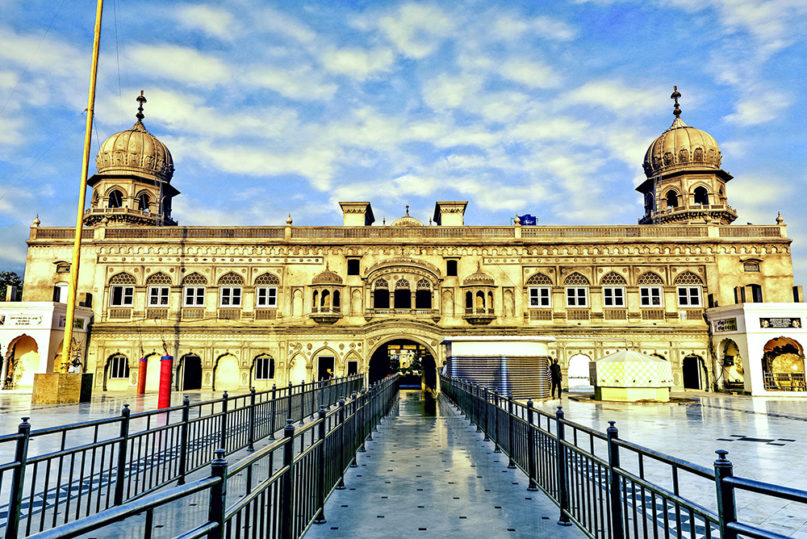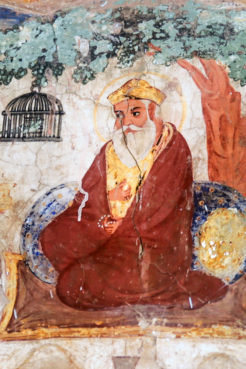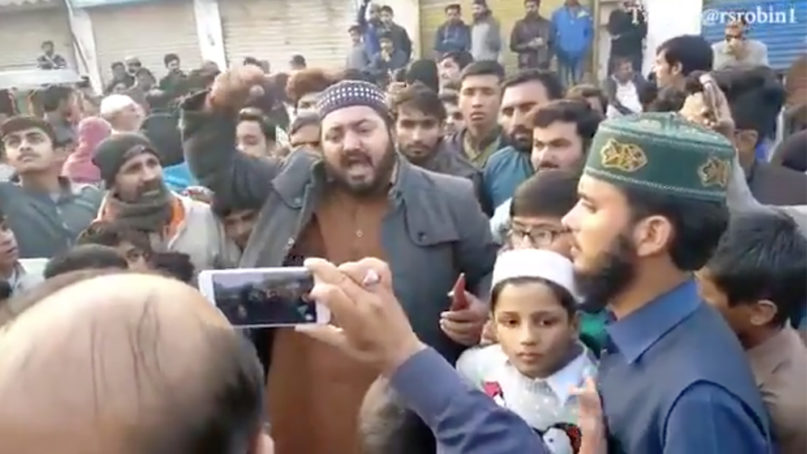(RNS) — The footage of an angry mob surrounding a Sikh gurdwara (place of worship) in the Pakistani town of Nankana Sahib on Friday was terrifying and a disappointment for Sikhs and other religious minorities who have long sought relief from persecution in Pakistan.
This attack, in which people chanted they “will no longer allow Sikhs to live in Nankana Sahib,” appeared to be motivated by a local dispute over the alleged abduction and conversion of a Sikh woman. For Sikhs, the targeting of this gurdwara hit home. The place of worship, Gurdwara Janam Asthan, is one of the most revered and historic sites in the Sikh tradition, marking the birthplace of Guru Nanak, the founder of Sikhi.
Here is a short primer.
Why Nankana Sahib matters
In 1469, Guru Nanak was born in the town of Talwandi, in the part of Punjab that is now Pakistan. To honor his remarkable life and contributions, the town was later renamed Nankana Sahib, “which roughly translates to ‘revered place of Nanak,” and Sikhs have cherished it in the centuries since.
The British partitioned India in 1947 into two nation-states — one supposedly for Muslims and the other for Hindus. Punjab, where most Sikhs trace their ancestry, was split in half.

The Gurdwara Janam Asthan is built on the site where Guru Nanak is believed to have been born in Nankana Sahib, Pakistan. Photo by Shaguftakarim/Creative Commons
The Partition of 1947 resulted in the greatest migration in human history. Sikhs and Hindus in western Punjab migrated east to India. Muslims journeyed the other direction toward their new country. Chaos and communal tensions reached a climax as their paths crossed, resulting in immense violence and loss of life. Millions were killed. Millions more were displaced.
An additional source of pain for Sikhs was that much of their beloved history had been left on the other side of their now-split homeland of Punjab. Most Sikhs had moved from Pakistan to India after Partition, and Sikhs have important sites on both sides of a tenuous border. Given the tensions between the Indian and Pakistani governments, this split was more than just one of geography; Sikhs were no longer free to visit these historic sites.
The Sikh community felt this pain so deeply that they even incorporated a request in their daily prayer (ardas) that they may one day be reunited with Nankana Sahib, the birthplace of Guru Nanak. Decades later, this remains a standard request that Sikhs make on a daily basis.
Who was Guru Nanak?
From a young age, Guru Nanak was disillusioned by the social inequities and religious hypocrisies he observed around him. He believed that a single divine force created the entire world and resided within it. In his belief, God was not separate from the world and watching from a distance but was fully present in every aspect of creation.

An early 19th century mural depicting Guru Nanak at the Gurdwara Baba Atal in Amritsar, India. Image courtesy of Creative Commons
He therefore asserted that all people are equally divine and deserve to be treated as such.
To promote this vision of divine oneness and social equality, Guru Nanak created institutions and religious practices. He established community centers and places of worship, wrote his own scriptural compositions and institutionalized a system of leadership (gurus) that would carry his vision forward.
The Sikh view thus rejects all social distinctions that produce inequities, including gender, race, religion and caste, the predominant structure for social hierarchy in South Asia.
The rampant extremism and exclusivism we see across South Asia today is precisely what Guru Nanak stood against. He would not have accepted the intolerance and discrimination against minorities that has become normative in Pakistan.
This is why I find it difficult to see Sikhs on both sides of the Punjab border subject to social inequities and state persecution — and this is why it feels especially painful to witness the targeting of his birthplace in Nankana Sahib.






